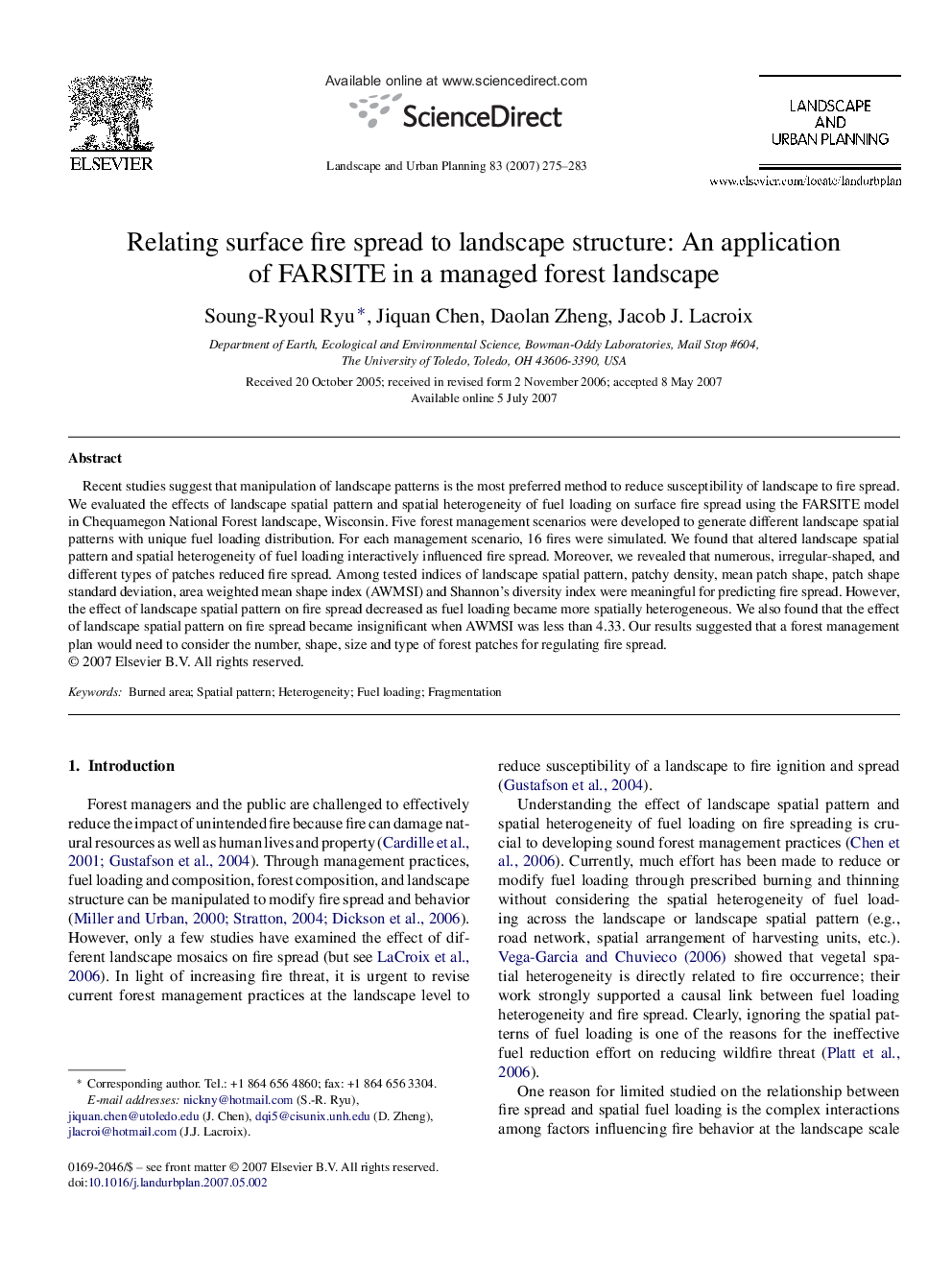| Article ID | Journal | Published Year | Pages | File Type |
|---|---|---|---|---|
| 1050246 | Landscape and Urban Planning | 2007 | 9 Pages |
Recent studies suggest that manipulation of landscape patterns is the most preferred method to reduce susceptibility of landscape to fire spread. We evaluated the effects of landscape spatial pattern and spatial heterogeneity of fuel loading on surface fire spread using the FARSITE model in Chequamegon National Forest landscape, Wisconsin. Five forest management scenarios were developed to generate different landscape spatial patterns with unique fuel loading distribution. For each management scenario, 16 fires were simulated. We found that altered landscape spatial pattern and spatial heterogeneity of fuel loading interactively influenced fire spread. Moreover, we revealed that numerous, irregular-shaped, and different types of patches reduced fire spread. Among tested indices of landscape spatial pattern, patchy density, mean patch shape, patch shape standard deviation, area weighted mean shape index (AWMSI) and Shannon's diversity index were meaningful for predicting fire spread. However, the effect of landscape spatial pattern on fire spread decreased as fuel loading became more spatially heterogeneous. We also found that the effect of landscape spatial pattern on fire spread became insignificant when AWMSI was less than 4.33. Our results suggested that a forest management plan would need to consider the number, shape, size and type of forest patches for regulating fire spread.
